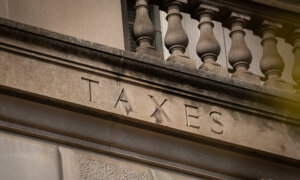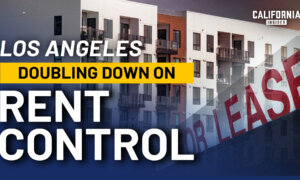If you’re in the market for an inexpensive second car, a first car for a family member, or just want to save some money on a high-interest new-car purchase, the current automotive market may not be to your liking.
According to a report from Kelly Blue Book and Cox Automotive, the average transaction price for a new car is slightly lower this year than last, but stands at $47,870. While this is down 4.3 percent from a peak of $49,928 in December 2022, the high prices are still affecting overall sales.
Edmunds.com says the continual high prices are due to several factors.
“Part of the reason why prices are staying high is because inventory is hovering at levels where consumer demand is largely being met, and generous blanket incentives are being deemed unnecessary,” Jennifer Caldwell, an Edmunds analyst and head of insights, told The Epoch Times via email.
“Although this is an overall healthy place for the industry to be in compared to automakers’ pre-pandemic habits of overproduction and inventory glut, it unfortunately has also limited potential discounts or promotions for shoppers.”
According to Edmunds figures, the average new vehicle transaction price was $36,677 five years ago, meaning prices have jumped 28 percent since then. The company also reports that many more options were available to consumers at lower price points at that time.
Buyer Preferences Changed
Cox Automotive senior economist Charlie Chesbrough said the higher average sale price is also indicative of both buyer preferences and changes in the types of cars now available.
“There’s a lot of reasons why prices are where they are. The mix has changed as the industry went to more expensive cars, while Tesla got a 4 percent market share. Prices are coming down now only because people are buying smaller vehicles,” he told The Epoch Times.
“The mix of vehicles being sold now is a little bit misleading. Part of it is by design because the industry moved away from lower price points. They have no interest in selling $30,000 and below cars. Also, the customer base in the market today is more affluent. They have more money and don’t want subcompacts, while the higher interest rates are causing people to buy fewer and fewer and smaller cars.”
In an article written earlier this year by Caldwell for Edmunds.com, titled “Where Did All the Cheap Cars Go?” she pointed to the last 10 years when low interest rates combined with longer loan terms allowed Americans to embrace the “bigger is better” mentality in auto purchases, which included “more richly equipped trucks and SUVs,” with the belief that small vehicles were going to be extinct. High interest rates, though, have helped shift that philosophy.
In its Oct. 1 Market Insights report, Cox reported that the average interest rate for new auto loans is 9.54 percent, while used auto loans average 13.93 percent.
Data supplied by Statista show rates are coming down somewhat, but today’s average interest rate represents a sizable jump compared with rates of less than 4 percent offered as late as February 2022.
Auto Sales Sluggish
Auto sales, meanwhile, continue to underperform. In the third quarter of this year, U.S. vehicle sales fell 1.9 percent year over year, according to Wards Intelligence.
Looking ahead to fourth-quarter sales, Chesbrough believes several significant factors could affect automakers’ sales numbers in the United States.
“Our view is that the fourth quarter will have two main forces battling. First, the recent rate cut [a half point by the Federal Reserve] should spur some more economic activity and help the psyche of the American consumer who will see tangible gains on their credit cards instantly,” he said.
“But we’ve also got the election going on, and there’s a lot of uncertainty. Most of the higher income folks are paying a lot of attention to what’s going on politically and may decide to just wait and not take out a $40,000 to $50,000 loan and wait until later in November.”
The good news for auto buyers in the fourth quarter is that dealer incentives appear to be again on the upswing.
According to Kelly Blue Book, new vehicle sales incentives have been increasing through 2024, with August incentives estimated to be at the highest level since the first half of 2021.
Incentives made up 7.2 percent of the average transaction price in August and are expected to positively influence September sales volumes.














